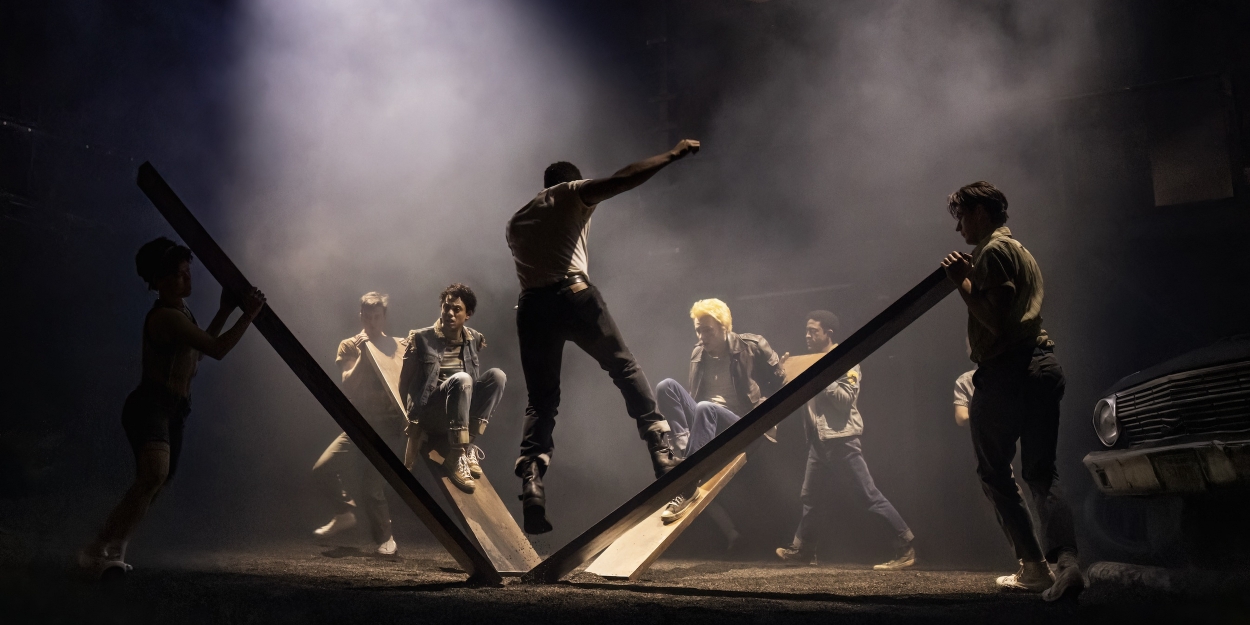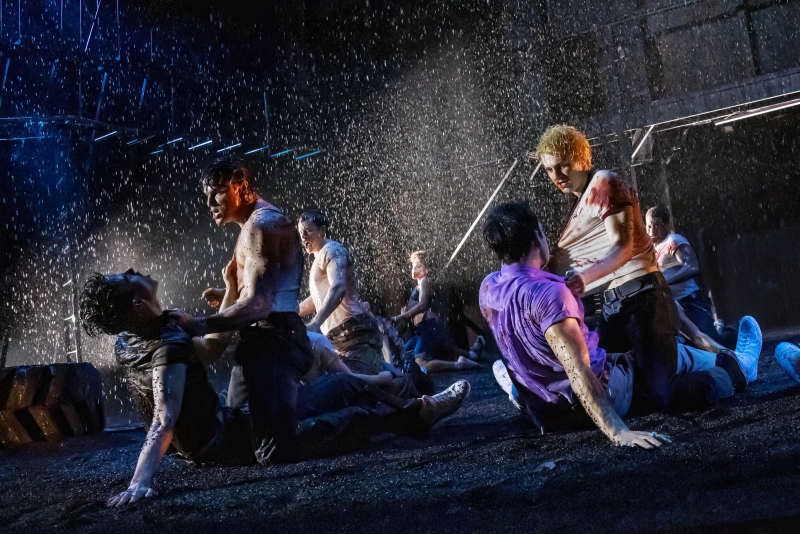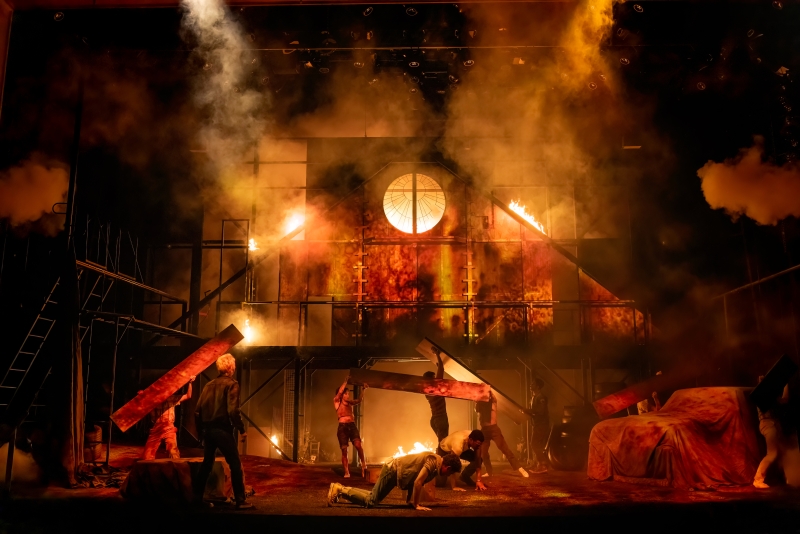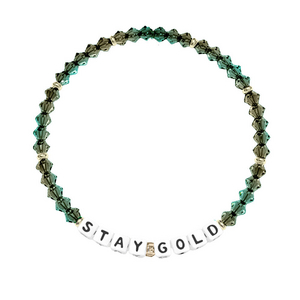Broadway By Design: THE OUTSIDERS
The Outsiders is running on Broadway at the Bernard B. Jacobs Theatre.

|
|

In Broadway by Design, BroadwayWorld is shining a spotlight on the stellar designs of this Broadway season, show by show. In this special edition, we are checking in with the Tony-nominated design collective behind The Outsiders, AMP.
What is a design collective, and can you talk a bit more about the mission behind AMP?
When we say that AMP is a design collective, it means that we are a group of multiple designers working in conjunction as equal partners in creating the scenography for a particular stage show. Together we develop the ideas, work in the studio, participate in rehearsals, attend scene shop visits, and make decisions. AMP is a design collective founded by Brett J. Banakis and Christine Jones to amplify and support emerging and underrepresented designers through equitable collaborations. For The Outsiders, they collaborated with Tatiana Kahvegian, a Brazilian designer of Armenian descent. Christine and Brett will work with a different featured collaborator for each AMP project.
You use the term Scenography to refer to your design. Can you explain the origin and meaning behind that?
We use the term Scenography to describe more accurately the form or process of scenic design. When considering the physical design of a production we are creating a kinetic space that moves through time, has its own beginning, middle and end, and is deeply entwined with how bodies move through space. We see Scenography as akin to choreography, or cinematography. It is the art and practice of designing theatrical space.

How did you collaborate on The Outsiders?
We like to say that our whole is greater than the sum of our parts. We shared in the entire process from start to finish meeting with the other designers and makers, researching, exploring dimensional space in the model, attending rehearsals and engaging in the tech process. As a collective, we supported each other at various stages in different ways. Sometimes that meant Banakis and Jones would take a step back to make space for Kahvegian to run a paint call, or supervise set dressing, while other times it meant Banakis and Kahvegian would hold down the fort so Jones could attend to family needs. Mostly, it meant putting our heads together to come up with the best solutions to spatially and atmospherically enhance the narrative and the playmaking. Working collectively allows us to serve the play and the process with a multifaceted intensity, while supporting our ability to be present for other aspects of our lives when necessary.
Did director Danya Taymor come to you with a particular perspective for how the production should play within the confines of the stage?
From the outset we had a shared desire with Taymor to create a production that felt raw, immediate, emotional, physical, dynamic, vulnerable, beautiful, and poetically real. We were all aligned on the kinds of storytelling devices that we wanted to employ onstage.
What were some of your design inspirations for your work?
We came to envision the space as a memory playground in which Ponyboy tells us the story of his life in Tulsa and ultimately how he (through S.E. Hinton), came to write the book. Banakis visited Tulsa with other members of the creative team, for primary research. We were inspired by the locale, by drive-ins, playgrounds, and parks. We were interested in creating a theatrical world that allowed for choreography to take our breath away, and to manifest elemental forces (thanks to the incredible work of Lillis Meeh and Jeremy Chernick), bathed in light and projection by Brian MacDevitt and Hana S. Kim. Artists like Pina Bausch and Romeo Castellucci--whose works create exciting collisions between natural forces and human bodies--were also forefront in our minds.

Your designs incorporate a lot of found objects (i.e., tires, cinder blocks, etc.) as well as many of the natural elements (i.e. earth, water, fire, etc.). Talk a bit about incorporating those into your designs.
As described above, we are passionate about creating spaces that engage the audience in imaginatively co-creating the world with the performers. By building key elements like a train or a hospital bed with tires and planks, we are acknowledging the theatricality of our shared endeavor to generate live transformative interactions. We came up with a set of tools for Taymor and the Kupermans to use, played with them in the model, and then made sure that these elements were in workshops and rehearsals from the beginning so that they could fully explore their potential.
There are some really distinct playing spaces on stage – the jungle gym, the two cars, the home of the Curtis brothers, the upper level, etc. Can you talk about what went into the thinking of these design spaces?
It was important to us that cars, as key symbols of the status and culture of the Greasers and the Soc’s be present onstage. The cars are both literal and metaphorical embodiments of the world each of the two groups lives in. In the spirit of creating a poetic landscape, letting the run-down Greaser car exist as an anchor for the Curtis home, as well as at the center of the Greaser’s world, allowed us to show the contrast with the Soc car which enters shiny and new from a world on the other side of town that the Greasers don’t have access to. The back wall evokes the Drive In, one of the only places that both groups are allowed to co-exist. The playground is at the center of the dispute over the fight for territory and who has control over the turf. Combined, these spaces live in Ponyboy’s memory and are a container for the love and the loss he lives through. By allowing all of the action to take place within one setting that is made up of multiple spaces we acknowledge that this story is told to us through the lens of Ponyboy’s recollections and narration. He is one boy whose story provides a window into the souls of those he encountered.
The Outsiders is running on Broadway at the Bernard B. Jacobs Theatre.
.png)
|
.png)
|
Videos






